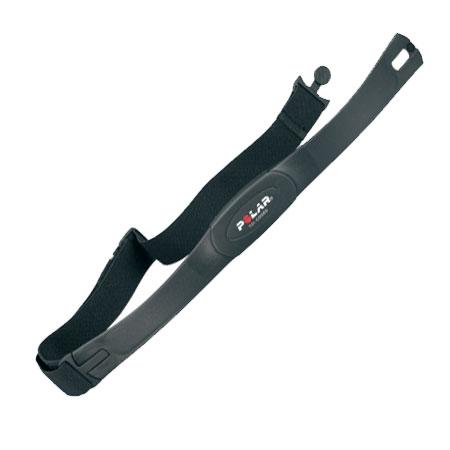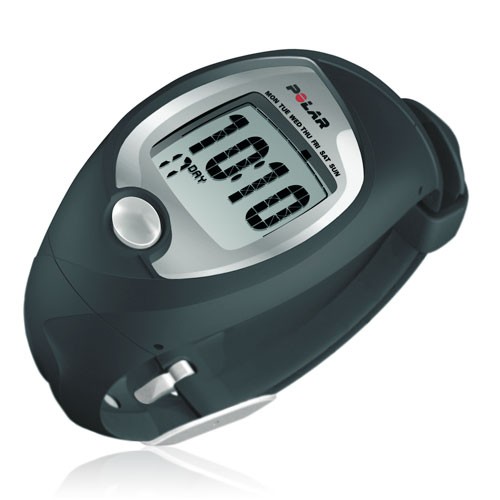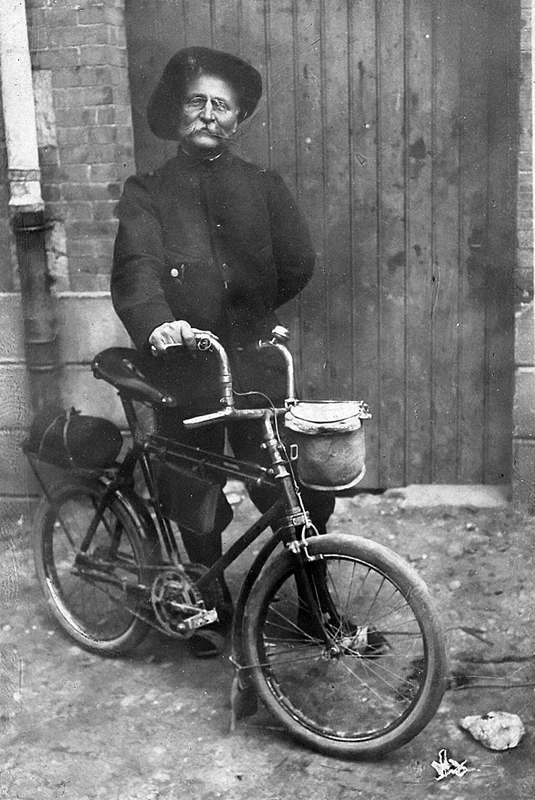


| < - > Facilitate effort — Itineraries — Guiding — Equipments — Paradises — Preparations — Health — Sitemap — Contact |
FACILITATE THE EFFORT DURING CYCLO-HIKING
The effort must remain a PLEASURE over the days and miles.
Many of our evening guests are surprised to learn how many kilometers we travel during the day, and to see our load in relation to the freshness in which they find us. Nearly all of them tell us that the cyclists and cyclorandonneurs who pass by their homes usually arrive exhausted and exhausted from their day's pedaling.
Why is that? Because we are not athletes and don't have a great training.
This can be summed up in a few simple but essential practices. In addition, a few tricks can optimize the load a little bit.
In any case a sign does not deceive. If fatigue sets in over several days in a row, it is because choices unsuitable for cycling effort (for cycling pleasure) have been made.
For us, with the following rules, we NEVER accumulate fatigue over the weeks of riding…
CYCLING CADENCE

Let's start with a factor that we only discovered in 2019: the PEDALING CADENCE. This is characterised by the number of revolutions per minute of the crankset.
Previously, like many amateur cyclists, we liked to have "resistance" under the pedals. In other words, we used to pull a little long developments, turning the pedals quite slowly. We didn't like to "grind" because it gave us the unpleasant feeling of not feeling any resistance under the pedals.
In addition, we had the impression that we would lose strength and run out of breath if we went up to a higher tempo. We thought that a high cadence was reserved for professional riders and cyclo-sportives. That only they could benefit from it.
In 2019 we have changed from Classic Bike to eBike. As soon as I received them, I looked at the technical documentation for our BOSCH engines. I read in it the importance of pedalling cadence to benefit from the best assistance and autonomy performances. I wasn't enthusiastic about it, but the need to optimise our autonomy during our heavily laden cycle rides led me to try to respect this usage parameter.
I then forced myself to do my outings by gradually increasing the pace. Monitoring is easy since the BOSCH electronic regulation (KIOX) integrates this parameter and allows it to be displayed. At first I found it disturbing, even unpleasant. Obviously I must have been in a cadence range of 60-65 (rpm) beforehand. During our 2 hikes in the summer of 2019 I managed to get up to a cadence of 75-80 on average. And I found this quite pleasant.
Then I continued my winter and spring hikes, always paying attention to this optimization. This allowed me to reach our 2 hikes in the summer of 2020 with the great pleasure (!) of reaching a cadence of 80-90 or even 85-95 depending on the circumstances and the relief. And YES, I did write GRAND PLAISIR. Indeed, I finally felt all the benefits that such cadences provide for the management of the effort.
Everything I read in 2019, when I first became interested, turns out to be true. And this factor is important even for us who are not cyclo-sportives, but simple bicycle travellers, cyclo-hikers.
On the physical level (in the technical/mathematical sense) this is totally explained. Because of my studies and my professional life full of calculations, I should have thought about this a long time ago. Indeed we are the driving element of our bike. We transmit our body power to the bike via the pedals. Mathematically the power of a rotating element (in this case the crankset) is defined by the formula P = T.ω where P is the power in Watts, T the torque in N.m (Newton.meter) and ω the rotation speed in rad/s (radians per second). Here the torque T comes from the application of the force F of our leg muscles at the end of the cranks of our crankset. These cranks are characterised by their length L. Therefore T = F.L and finally P = F.L.ω
L is a constant, it is the crank length. So the only parameters that vary are F and ω.
It is immediately apparent that it is possible to produce strictly the SAME P Power with:
- either a big F (high force) and a small ω (low rate)
- either a small F (low strength) and a large ω (high rate)
And after physics (mathematics) let's look at the physical side in the corporeal sense of the term. Here the way our metabolism works is clear and unambiguous. The more a muscle works, the stronger it is:
- The more it becomes saturated with lactic residues.
- The greater the muscle tension, the more aches and pains develop.
- The more glycogen the muscle consumes, the lower the endurance.
Of course, the pace should not be excessive, the ultimate limit being gestural coordination. But training allows you to push your own limits.
My Darling came to this practice with a bit of a time lag. As I explained in the page dedicated to our evolution from VC to VAE, we anticipated the transition to VAE for several years because of a heavy medical treatment which had affected her physical capacities. As a result, she was not able to do this in 2019. However, as her form returned (fortunately faster than expected), she was able to integrate it into her own rhythm in 2020. Now she is as satisfied as I am with this way of working, and we can't go back.
The drop in heart rate is direct evidence of the lesser fatigue obtained by increasing the pedalling cadence. In 2021 I experimented during a hike, on a steep and constant slope, to pedal at a cadence of 94 (the one I enjoyed the most at that moment of the relief), then to force myself to cadence 80. At 94 rpm my heart, despite the terrain, was beating at 142 bpm. At 80 rpm it was up to 158.
Once you get used to the high speed, you can't go back. The reliefs are swallowed with great efficiency, less fatigue.
For classic bicycles, there is now equipment that is very easy to install to continuously measure its cadence. All you have to do is place a sensor on one of the cranks and a display receiver on the handlebars… and you're ready to go. The display receiver is not even necessary if you have a speedometer or GPS with this display. All you need is Bluetooth or ANT+ compatible equipment.
The 2 best current sensors are GARMIN and WAHOO.
TOP BEFORE YOU GET TIRED
The natural tendency is to stop only when you are tired. The disadvantage is that you then dig into the body's reserves. Inevitably, these reserves diminish over the course of the days. Automatically this leads to significant exhaustion at the end of each day.
A good idea is to stop every 20 km or at most every 90 minutes (in case of strong positive difference in altitude).
DRINK BEFORE YOU'RE THIRSTY
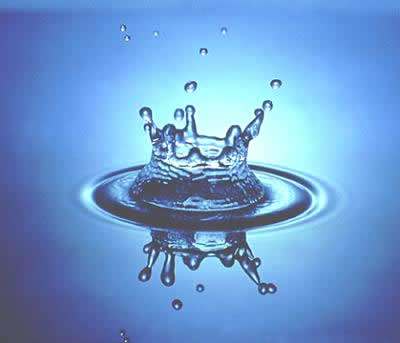
Again, the natural tendency is to wait until you are hungry to eat and thirsty to drink. The disadvantages are the same as above.
It is best to drink very regularly while riding.
To really drink regularly the solution is to have, like camels, your water bag. So we each have a water bag on our back (moreover by putting the yellow safety vest on the water bag it allows us to ride safely without being too hot in summer).
See here the details of the equipment.
EAT BEFORE YOU ARE HUNGRY?
Whether or not you need to eat (snack) during exercise depends on your eating habits. The difference lies in the presence or absence of carbohydrates in the diet.
CARBOHYDRATE FEEDING - SNACKING DURING EXERCISE
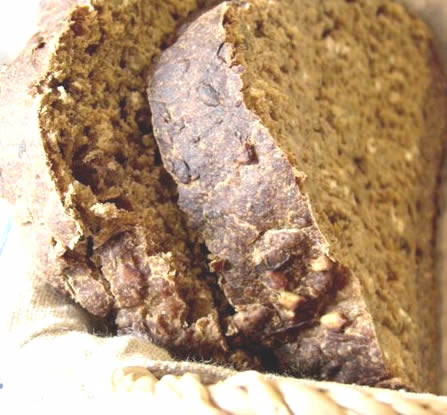
The traditional French (and Western) diet incorporates a lot of carbohydrates. Our famous white breads and pastries, but also all savoury or sweet dishes incorporating white flour, pasta, industrial preparations (which are packed with sugars to make us addicted), desserts, beer, soda… etc.
In this way of eating, the metabolism draws its energy from the sugars consumed. These sugars are only available (in the blood) for a limited time (2 hours at most). After this time, the liver does its job and stores them as fat. So that between 2 meals, physical efforts require additional fuel: there is a need for nibbling.
This snacking can be of 2 kinds:
- The worst: energy bars, energy drinks, all sweets or high GI foods.
The boost is short-lived and weight gain is just around the corner...!!! - The best: A light snack with some wholemeal bread or dried fruit. Or even better, some oilseeds: walnuts, hazelnuts, almonds, cashew nuts, Brazil nuts. This provides energy with plenty of minerals, with extremely low GIs.
In this case lasting energy is available.
Nibble very lightly at every break (e.g. every 20 km or 90 minutes).
LOW OR NO CARBOHYDRATE DIET
A low-carb diet is a permanent low-GI diet at all meals. A diet with no carbohydrates is a ketogenic diet (Keto).
In both cases the metabolism cannot rely on carbohydrates during exercise. The available circulating sugar is very low in low GI and zero in Keto. Consequently, the liver will simply look for the energy necessary for the effort in the fats of the body.
NOTE: The Keto mode is rightly controversial because of the deficiencies it can cause. On the other hand, with the low GI mode there are no undesirable effects… quite the contrary!
With these types of diet there is no more energy crash. There is no need to snack between meals, even during heavy exercise. The efficiency is remarkable.
EAT WELL
GREAT CLASSICS TO PROSCRIBE

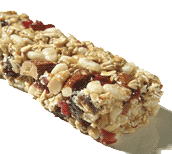
A few erroneous classics (high GI) should be banned:
- Liquids other than water (soft drinks, but also energy drinks which are high in fast sugars)
- White bread (French bread) that doesn't bring much (just empty calories and high GIs (fast sugars),
- Industrial cereal bars that are filled with very high GI glucose.
In all three cases this only provides a temporary boost, but not resistance over several hours.
This then requires additional rations without interruption… with the only result of serious excess kilos…!!!
BALANCED DIET ON A CYCLO-RIDE
Changing your habits is always VERY difficult. Especially for us French people !!! In the case of cycling, not changing one's bad eating habits (at least during the hike) means exposing oneself to the inconvenience of pain, cramps, exhaustion… This can go to the ultimate displeasure: not being able to go any further. It is then the final stop, the abandonment.
FOR REMEMBER:
Great champions are vegetarians: Lewis Hamilton (Formule 1), Ivan Lendl (tennis), Carl Lewis (sprinter - 8 gold medals), Alain Mimoun (marathon), Martina Navratilova (tennis), Lizzie Armitstead (cyclist)… etc.
Meat-eating sports champions can afford to have their overflow of muscle toxins evacuated by their appointed masseurs… we cyclorandonneurs anonymous it's much less obvious!
The myth linking muscular strength and meat (especially red) is tenacious. But there is no need for this food. It is even disadvantageous in long-term efforts because meat is a great purveyor of toxins. As the intense muscular activity of pedalling already generates a lot of toxins, the organism is overwhelmed by it and has difficulty in eliminating all these wastes… Thus, by sacrificing to this myth, we deteriorate our strength and endurance.
Of course, the delicatessen (sausage, rillettes and other pâtés) is even worse. It is very little protein, a lot of bad fat and a considerable amount of toxins. It is pain for the cyclorander.
To avoid excess meat, it is sufficient to turn more often to vegetable or sea proteins. For example:
- In the morning and/or during snack breaks:
- Walnuts and hazelnuts (13 to 15g of protein per 100g)
- Almonds (19g of protein per 100g)
- Preferably at noon (or otherwise in the evening):
- Split peas (33g protein per 100g)
- Lentils (23g protein per 100g)
- Chickpeas (20g protein per 100g)
- Fish (sardines, anchovies, mackerel…) (13 to 20g of protein per 100g)
- Comté or emmental cheese (30g of protein per 100g).
By way of comparison, meat contains 18 to 22g of protein per 100g (plus a packet of toxins that are unfavourable to muscular effort).
Legumes, peas and lentils are absolutely delicious. Moreover they are easy to find cooked in any food store. Prepared in a variety of salads, it's hyper-fast and easy to prepare. But these delicacies, excellent for health, are underestimated in our rich countries.
Alternatively, beans are less favorable in protein, but excellent as slow sugars (low GI).
REMINDER: the appellation fast sugar or slow sugar is still popular, but outdated. It is more appropriate to refer to foods with a high or low GI (Glycemic Index). The reference is glucose with a GI of 100. The good food for the form (and to avoid forms) are foods with a low GI. Here is a table of GIs for a few hundred foods.
The very classic pasta is perfect. And for variety and pleasure, pasta salads (at lunchtime for example) with shrimps (or mussels, tuna…) are super pleasant; moreover it is once again quick and easy to prepare. But beware for the effort (as for the line) pasta is only good al dente! Indeed, overcooked, they will see their GI (Glycemic Index) increase by 20%, as a consequence of the breakdown of starch into glucose.
We like our glass of red wine at lunchtime… except when cycling. At noon it breaks the muscle tone, in the evening (as in ordinary life) it prevents a good restorative sleep. White wine is even worse for the muscles. Wine is therefore the opposite of the pleasure of cycling. On the other hand the days of relaxation without pedalling are conducive to a pleasant exception. In short, the tour of the cellars is for car tours (without driving of course), but not during a cycle tour.
French white bread is not recommended because of its very high GI. The bread with the lowest GI is "rye bread". But watch out for a real "rye bread". That is to say only rye, without other flours. Otherwise the GI will immediately rise.
Otherwise the "German" bread called "Pumpernickel" is very favourable, in addition it has an excellent taste. It is easy to transport and keeps well, so why deprive yourself? You can find it in most supermarkets in the bread and special bread section or in the organic section.



If you include vegetable proteins in your CURRENT LIFE diet, then
CEREALS AND LEGUMES SHOULD BE COMBINED IN THE SAME MEAL.
Cereals lack an essential amino acid called lysine, and legumes lack an essential amino acid called methionine.
This is why for centuries the following associations have been found throughout the world:
- In China… soy and rice
- In India… lentils and rice
- In North Africa… chickpeas and wheat (couscous)
- In Southern Europe… beans and pasta…
- In South America… kidney beans and corn…
Exception that confirms the rule: quinoa can be eaten alone, as this cereal contains lysine.
CRAMPS : POTASSIUM - MAGNESIUM
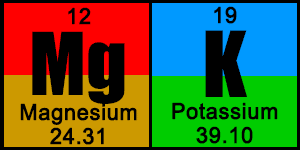
With long term efforts, potassium or magnesium deficiencies lead to muscle cramps.
In everyday life, the majority of the population is deficient in magnesium… with the consequence that stress develops. Since stress leads to a high consumption of body magnesium… it is a vicious circle.
If the stress is well managed, the diet can be sufficient to provide magnesium. The daily diet should be rich in green vegetables, oilseeds, pulses and wholegrain cereals.
On the other hand, cramps linked to physical effort are most often due to potassium losses. To limit these losses, you can nibble on dried bananas during exercise (potassium from 1100 to 1400 mg/100 g).
But the most radical and effective way to prevent cramps is to take DECRAMP tablets (from the IPRAD laboratory). CAUTION they are rough and therefore difficult to swallow whole with a glass of water. To avoid choking, the best thing to do is to crunch them with water or let them disintegrate in a glass of water.
The instructions for use do not specify the right time of day. However, from experience we recommend taking them just after exercise. This is because potassium and magnesium are not stored in the body. So if you take them before exercise, your body will become saturated very quickly and will eliminate them just as quickly in the urine via the kidneys. After exercise, the body will be in shortage and will greedily take in this healthy supply.
LEAVE EARLY… ARRIVE EARLY

On a hike many years ago, we decided not to get up at dawn like every other morning. So we hiked by getting up at the crack of dawn and therefore starting around 10 am. It was super cool… at first.
But we were disappointed:
- We arrived late in the afternoon.
- More tired than usual.
- With almost no relaxation other than washing, eating and going to bed.
The biggest surprise was to be more tired than usual, at equal distance and difficulty.
In fact we had not taken into account the fact that when you are over 20 years old, even without physical activity during the day, you arrive at night with less punch than in the morning and with the need each night for a good night's restorative sleep.
So when, in addition, the days are well filled with prolonged physical activity, the need for relaxation comes even earlier, in the afternoon.
Moreover, we used to do the shopping for the noon picnic in the morning of the same day. This wastes a significant amount of time and postpones the end of the daily pedaling. The negative consequences are described above.
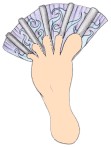
Since then we always organize ourselves to arrive around 3pm, at the latest 4pm. Either start pedalling around 8-8:30, or at worst 7:30 for the difficult stages. And so we:
- Let's come in a lot cooler.
- We have time to take a shower, relax, stroll around the stage town, do the next day's shopping, visit the surroundings of our stage or even put our toes in a fan…
- Let's eat early, so we can fully digest before bedtime. And so we can sleep soundly and restfully…
- Let's leave early the next morning, full of physical and moral energy…
- Let's get as much PLEASURE as possible.
This is all the more true and necessary when the climatic conditions are difficult..
HAVE A GOOD ALTERNATION OF PEDALING DAYS / REST DAYS
For long hikes of several weeks the best alternation we have practiced is 3/1.
That is 3 days of pedaling for 1 day of rest.
With more days of pedaling in a row you accumulate too much fatigue, with more days of rest in a row you lose the advantage of the acquired rhythm and you hardly start again.
A bad alternation will be cruelly felt after 2 weeks or more of riding. Fatigue accumulates with more and more difficulty to recover. This can lead to abandonment, without understanding the origin.
KEEP AN EYE ON HIS HEART RATE

Well loaded as we are in luggage (up to 45kg for one, 35kg for the other in hiking-camping mode), a pedaling regime a little too high can raise the heart rate beyond what is desirable, especially in very hot weather.
Two things are desirable:
- Don't burn out over the days.
- Do not "blow a pipe" (a wish shared with motorists).
Although they are adepts of cool routes, therefore without major relief, it is always possible to have to take a very steep section of road. And being no longer 20 years old (the proof we repeat ourselves) it is advisable to respect the usual engine speed: that the pulse does not exceed a maximum threshold of beats per minute.
This threshold limit is calculated as follows: MAXIMUM THRESHOLD = 220 - [Captain's Age].
For example, if you are 50 years old, the maximum threshold is 170 beats per minute (220-50).
This threshold is valid for short duration efforts. For prolonged efforts it is obviously advisable to set a value several tens of beats below the maximum threshold.
In order to apply all this, a heart rate monitor should be worn.
A first solution is to have a device like POLAR with a transmitter-measurer (on an elastic belt around the chest) and a receiver (watch fixed to the wrist or handlebars). The transmitter sends its measurement to the receiver/watch by radio waves.
The equipment of 2 users in close proximity to each other (2 cyclists in this case) is subject to interference. The watch of 'A' can receive radio emissions from its own transmitter and also radio emissions from 'B'. This causes 'A's receiver to panic and indicate at best the sum of the two, at worst nothing.
In order to avoid this interference, it is theoretically necessary for each transmitter belt to be coded (coded transmission). This is the case with some POLAR models. Unfortunately, in practice (we had several different models) the interference was never completely eliminated. Perhaps this is due to POLAR's proprietary technology, which is not sufficiently sophisticated.
There are other radio transmission technologies such as ANT+ and Bluetooth. ANT+ is a proprietary technology of GARMIN, licensed for use by other brands.
The disadvantage of ANT+ is that it can be connected simultaneously (without prior identification) with several receivers. So interference problems remain.
Bluetooth, on the other hand, has the advantage of requiring a pairing between transmitter and receiver. Many of today's sensors are dual-technology, ANT+ and Bluetooth.
We opted for a period of time for the WAHOO TICKR FIT which has a fairly good reputation and a low cost. It is worn as an armband on the arm or forearm. This ensures that the measurement is always reliable, unlike chest belts which often require a certain amount of moisture on the body to work properly. By pairing them individually with each of our VAE KIOXs, this ensures non-interference. Wearing the armband on the forearm, just above the elbow, is very comfortable and reliable.
The big advantage of the WAHOO TICKR FIT over our old POLARs is that the transmitter can be recharged and has a long battery life of several dozen hours. The transmitter can be easily clipped onto the charging cradle by simply placing it on top. The transmitter is easy to clip on to the charging cradle, and is held in place magnetically, which is perfect.
But over time we realized that the measure became from time to time temporarily delirious. The problem is that high sudden values suggest FALSELY a heart problem.
So we went back to the POLAR chest straps. But now, with a Bluetooth model, the POLAR H10. With this model there are all the advantages:
- Excellent measurement accuracy.
- Very comfortable belt.
- No interference.
- Interchangeable battery.
- Small silicone dots, distributed under the textile belt, prevent slipping on the skin.
STRETCHING
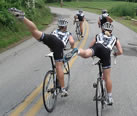
Although partly controversial, stretching is essential to avoid aches, backaches and cramps.
An excellent website offers stretching according to one's sport activity:
here stretching for the bike, (sorry, in French ; but there are some very explicit illustrations).
VÉLOCIO - PAUL DE VIVIE

We've simply rediscovered, some of the “7 Commandments of Velocio”.
It was while talking with Émile, a member of our family, a great cyclist who criss-crossed France in all directions throughout the 2nd half of the 20th century, that we learned of the existence of this great Vélocio and its Table of Commandments for the cyclotourist.
And this is not new! Since Velocio, whose real name was Paul de Vivie, lived from 1853 to 1930. We have thus discovered that he is the emblematic figure of French cycling tourism.
We encourage you to read the article about him.… Vélocio on WIKIPÉDIA, it's very interesting.
SOME MINI TIPS
Takeaway selections often lead to dilemmas. You have to take enough to be cool under any circumstances, but not too much so you don't get overloaded.
To facilitate this duality, we can do the following:
LIGHTEN UP WHILE HIKING
For example:
Depending on doubts about the context of the destination or about the weather uncertainties, one may be led to take away things that turn out to be useless in the end.
During the hike it is sufficient, as soon as the doubt is removed, to send a parcel home with the surplus. If the hike is longer than 15 days the post office will not keep the parcels. In which case the parcel must be sent to good souls (neighbours, friends, family, employer…).
PACK WHILE HIKING
Example: Send to yourself, at a stage fixed in advance, a parcel with the things you won't need at the beginning of the hike (clothes, cards…).
Sending by yourself does not work when you do not know your stages in advance (ex: camping) or when the duration of the trip is several months.
In this case it is enough, before leaving, to entrust or send a parcel to a relative. During the trip, when you stop for several days in a large city to visit, it is enough, at that moment, to have the parcel sent by express mail to the address of the place. This is what we practiced in 2015 during our cyclorandonnée in Scandinavia. Our trip lasted 3 months. One parcel after one month in Copenhagen, another one a month later in Stockholm. With Chronopost the delay was 24 hours… sent D-day from a provincial post office, received D+1. If the stage is not a capital city, allow one more day. Of course you should ask beforehand if the country is covered by the carrier.
IMPROMPTU PURCHASES (TROUBLESHOOTING) DURING THE HIKE
During a hike you may get surprises of equipment that become unusable. For some simple things we help ourselves locally. For more technical things it is much more complicated and LONG.
A great solution is AMAZON (anti-amazon ideologues close your chaste eyes and ears).
It is indeed necessary to know that an account created in France on AMAZON.FR allows you to buy also on ALL the other world sites of AMAZON. Amazon.COM, for the USA. Amazon.CO.UK, for Great Britain. Amazon.ES, for Spain. Amazon.DE, for Germany…. etc).
It's exactly the same account, it's the same Login - Password.
So with their large stock and ultra-fast delivery you can be delivered wherever you want, so on your way.
Example in 2019, in Germany, my air mattress suddenly seriously deteriorated. It was impossible to sleep properly. As our mattresses are very technical (ultra-light) they are not found everywhere, even in large cities. I ordered it on Amazon.DE and had it delivered to the next campsite where we planned to stop for 2 days. When I arrived at the campsite my package was waiting for me!
